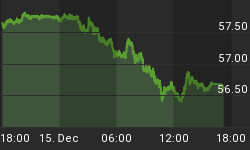After having looked at the Australian Dollar recently, it makes sense to consider the Australian stock market as well. The S&P/ASX 200 (INDEXASX:XJO) is comprised of the top 200 shares in the Australian Securities Exchange. Thus, it is more narrow than the often-quoted All Ordinaries index.
On the monthly timeframe, two cycles can be extracted from price data, with lengths of 80 weeks and 40 weeks. This spring, both of those cycles are poised to begin a downward phase. Based on cycles alone, we would expect weakness to extend into 2016 or 2017. The shaded areas on the monthly chart below shows previous times when both cycles have converged in their downward phases.
Besides the presence of a cyclical high, price also is retracing into a target range of 5,422 to 5,670, based on Fibonacci retracement values of the big decline from 2007 to 2009, and also based on a 1x1 extension measurement up off the 2009 low.

At the very least, traders with long positions should consider taking profits. A shorting opportunity may be forming here, but the relevant entry signals depend on the individual trader's approach and risk tolerance. Aggressive traders might make an offer near one of the resistance levels shown. More conservative swing traders would wait for a lower high to form on the weekly timeframe, and they would use the prior high as a guide for setting stops.
This article originally appeared at Trading On The Mark.















